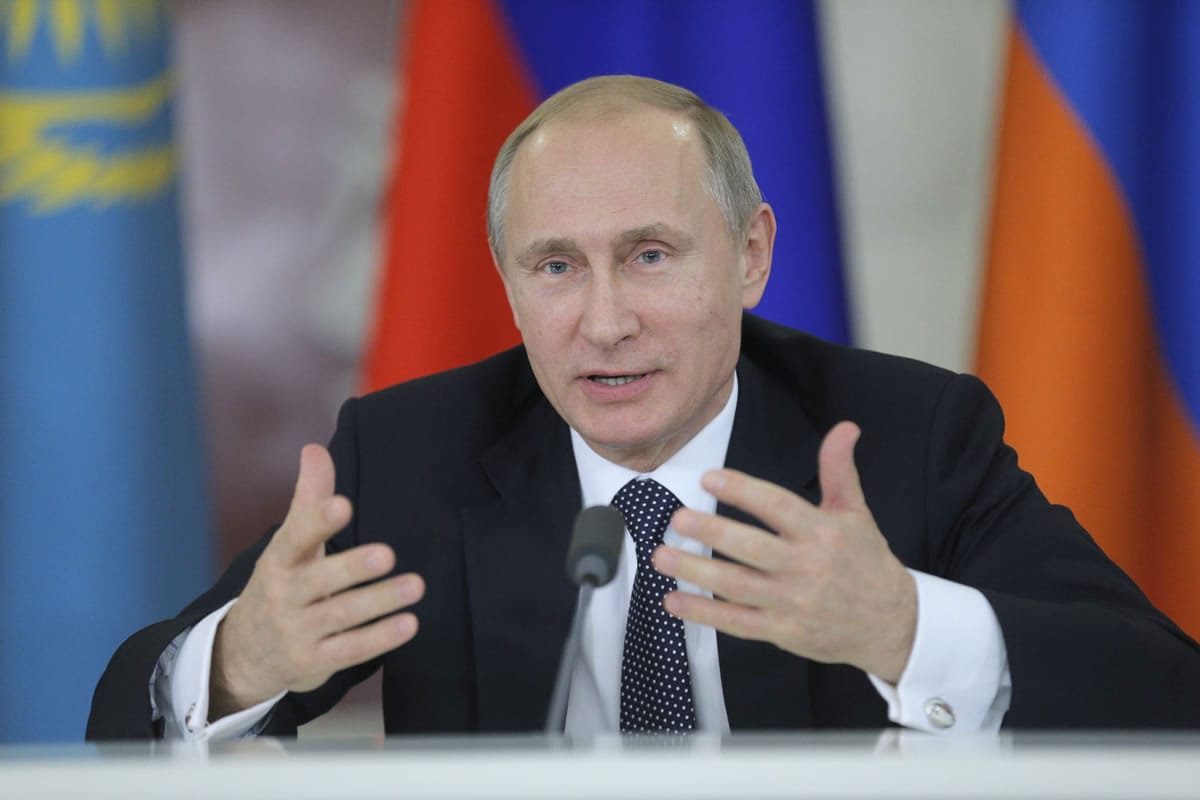MOSCOW — Russia identified NATO as the nation’s No. 1 military threat and raised the possibility of a broader use of precision conventional weapons to deter foreign aggression under a new military doctrine signed by President Vladimir Putin on Friday.
NATO flatly denied it is a threat to Russia, and accused Moscow of undermining European security.
The new doctrine, which comes amid tensions over Ukraine, reflected Moscow’s readiness to take a stronger posture in response to what it sees as U.S.-led efforts to isolate and weaken Russia.
The paper maintains the provisions of the previous, 2010 edition of the military doctrine regarding the use of nuclear weapons.
It says Russia could employ nuclear weapons in retaliation for the use of nuclear or other weapons of mass destruction against the country or its allies, and also in the case of aggression involving conventional weapons that “threatens the very existence” of the Russian state.
But for the first time, the new doctrine says Russia could use precision weapons “as part of strategic deterrent measures.” The document does not spell out when and how Moscow could resort to such weapons.
Precision conventional weapons include ground-to-ground missiles, air- and submarine-launched cruise missiles, guided bombs and artillery shells.
Russia has relied heavily on its nuclear deterrent and lagged far behind the U.S. and its NATO allies in the development of precision conventional weapons. However, it has recently sped up its military modernization, buying large numbers of new weapons and boosting military drills. It has also sharply increased air patrols over the Baltic nations.
This month, Russia flexed its muscle by airlifting state-of-the art Iskander missiles to its westernmost Kaliningrad exclave, bordering NATO members Poland and Lithuania. The missiles were pulled back to their home base after the drills, but the deployment clearly served as a demonstration of the military’s readiness to quickly raise the ante in a crisis.
Russia has threatened to permanently station the Iskander missiles, which can hit targets up to 300 miles away with high precision, in retaliation for U.S.-led NATO’s missile defense plans. The Iskander can be fitted with a nuclear or conventional warhead.
The 29-page doctrine is the document’s third edition since Putin was first elected in 2000.
The doctrine places “a buildup of NATO military potential and its empowerment with global functions implemented in violation of international law, the expansion of NATO’s military infrastructure to the Russian borders” atop the list of military threats to Russia.
It stresses that the deployment of foreign military forces on the territory of Russia’s neighbors could be used for “political and military pressure.”
NATO spokeswoman Oana Lungescu responded that the alliance “poses no threat to Russia or to any nation.”
“Any steps taken by NATO to ensure the security of its members are clearly defensive in nature, proportionate and in compliance with international law,” she said. “In fact, it is Russia’s actions, including currently in Ukraine, which are breaking international law and undermining European security.”
Russia’s relations with the West have plummeted to their lowest level since Cold War times, and NATO cut off ties to Moscow after it annexed Ukraine’s Crimean Peninsula in March. Ukraine and the West have also accused Moscow of fueling the pro-Russia insurgency in eastern Ukraine with troops and weapons, accusations the Kremlin has denied.
In 2010, NATO adopted its current so-called Strategic Concept. Without specifying which countries might be on the receiving end, the document states that “deterrence, based on an appropriate mix of nuclear and conventional capabilities, remains a core element” of NATO’s overall strategy.
Russia has been particularly concerned about the so-called Prompt Global Strike program under development in the U.S., which could strike targets anywhere in the world in as little as an hour with deadly precision.
The new doctrine mentioned the U.S. program as a major destabilizing factor along with NATO missile defense plans.



